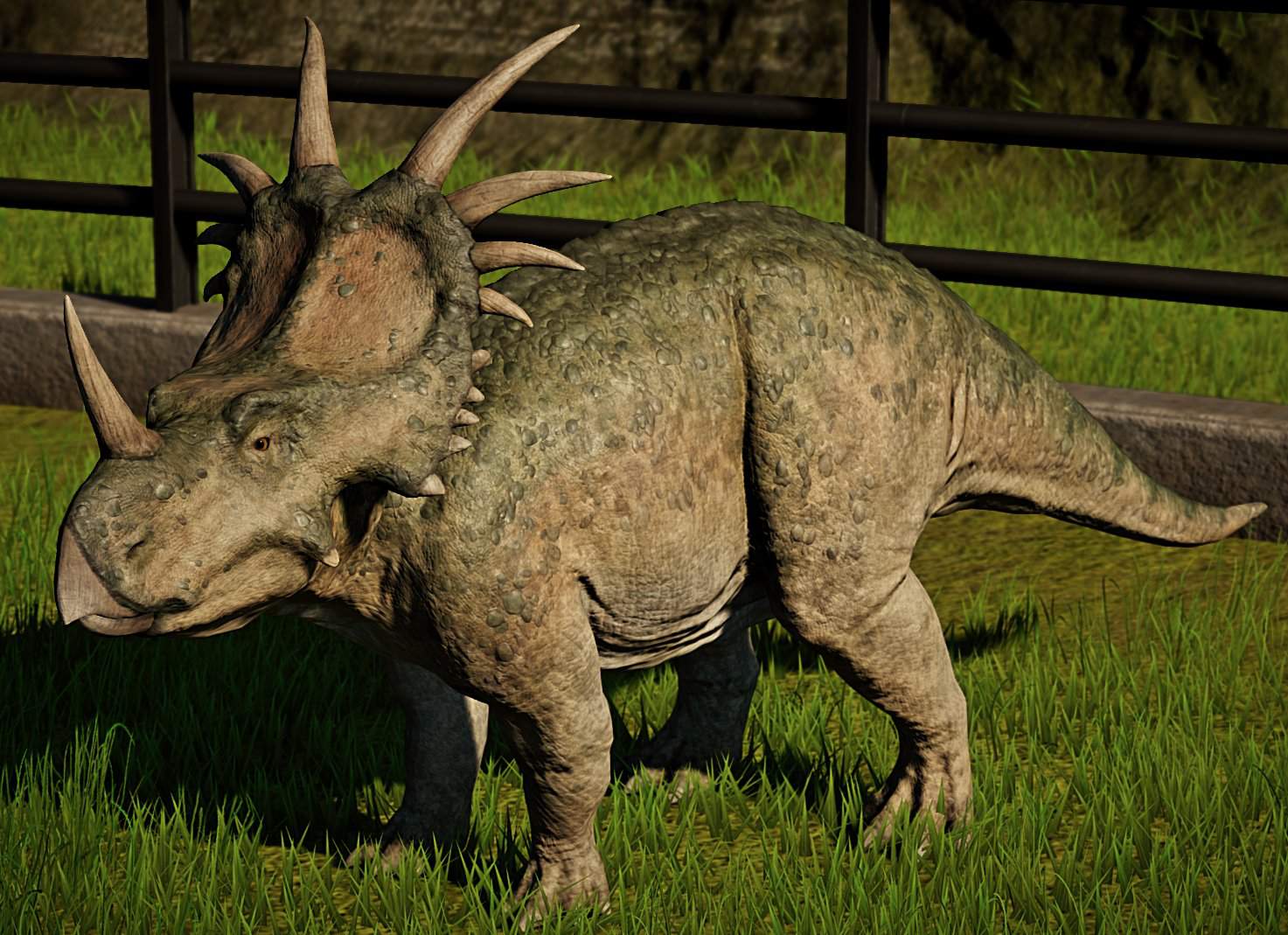



The normal shape of this area is unknown because the corresponding area of the right side of the frill was not recovered. It appears that the frill suffered a break at this point in life and was shortened by about 6 centimeters (2.4 inches). An unusual feature of this first skull is that the smallest frill spike on the left side is partially overlapped at its base by the next spike. albertensis was around 5.5 to 5.8 meters in length and stood about 1.65 meters high at the hips. This quarry was revisited in 1935 by a Royal Ontario Museum crew who found the missing lower jaws and most of the skeleton. Sternberg (from an area now known as Dinosaur Provincial Park, in a formation now called the Dinosaur Park Formation) and named by Lawrence Lambe in 1913. The first fossil remains of Styracosaurus were collected in Alberta, Canada by C. Further evidence of this exists in the discovery of a bonebed in Arizona, USA with about 100 Styracosaurus fossils.Īccording to its Encephalization Quotient (brain to body weight ratio), the Styracosaurus was of intermediate intelligence. Like other ceratopsians, this dinosaur was most likely a herd animal, traveling in large groups and caring for its young after they hatched. It also had a beak and cheek teeth, indicating that its diet was herbivorous and composed mostly of cycads, palms, and other prehistoric plants. Like the rest of the ceratopsian dinosaurs, Styracosaurus possessed four short legs and a bulky body, and was probably able to achieve speeds of up to 32 kilometers per hour (20 miles per hour). Other centrosaurine dinosaurs, such as Pachyrhinosaurus, were also found in that province. The first fossil remains of Styracosaurus were discovered in Alberta, Canada in 1913, in an area now known as the Dinosaur Provincial Park. It was a large dinosaur, reaching lengths of 6 meters (20 feet) and weighing as much as 4 tons. It was a relative of Centrosaurus and Monoclonius. Unlike them, however, Styracosaurus had six long horns extending from its neck frill, a smaller horn above each of its eyes, and a single horn protruding from its nose at 60 centimeters (2 feet) long and 15 centimeters (6 inches) wide. Styracosaurus ( meaning "spiked lizard") was an herbivorous dinosaur from the Cretaceous period. An artist's illustration of Styracosaurus albertensis


 0 kommentar(er)
0 kommentar(er)
